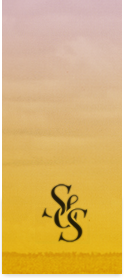
The sound: drum machine pulses, guitar flourishes, and synth washes. The setting: California by way of construction paper landscapes. Together they are FWY!, a project distinctly focused on the sensation of driving—all the work of San Francisco resident Edmund Xavier, who takes us through its inseparable elements below.



You’ve had a number of recording projects over the years. How did you arrive at this one, making “music for freeways“?
I grew up in Fullerton, California. You basically grow up on the freeway down there. It’s a whole lifestyle. In high school I had two delivery jobs with long depressing freeway runs. I know them well.
I love simple repetitive music, stuff that’s considered monotonous or even boring. About five years ago I started working more with drum machines, and the pulse naturally felt like ‘driving music’. I had the idea to make utilitarian music, sounds that worked as background in the car with the wind-rushing in or with passengers talking over it, mood music.
The German references are there any time you work with drum machines, but I tried to add certain ‘California’ sounds like freestyle beats, guitar twang and ‘desert’ post-punk like Savage Republic. I also draw on bits you would commonly hear on nostalgic radio, melodies from the intro to a Tom Petty or Grateful Dead song, rhythms from Salt N’ Pepa, Blondie, New Order etc. etc.
Having lived in California, I especially appreciate how each of your tracks takes on a particular town or highway as its title. How direct of an inspiration are these locations when you record?
Often they are directly inspired. For instance, my friend Kerry told me she was working a job in Marina Del Rey last year, so I made that track as a sunset come-down for her commute.
Sometimes I just like the way a place’s name looks and want to give it new life as a song title. When you are isolated in your car for hours, mundane road signs start to take on new meanings… you start to read into them. You can see the simple poetry in a name like “BUENA PARK”.






Describe the process of making FWY! cover art. Is each tear planned with a final design in mind or is there an element of chance?
I use dull scissors, X-acto knives, and glue stick. There is a lot of random cutting and then very specific cutting and measuring. There are also black & white xerox elements too that come from old books and pamphlets I find in the dollar bins at this library cast-offs book store. It takes some time to get them right. If one isn’t working, it’s easy to re-purpose and cut it apart.
Jean (Hans) Arp used construction paper in his Dada series According to the Laws of Chance. Children use it every day in kindergarten… the paper art spectrum is pretty broad. What draws you to the medium?
Yep, I feel like a kid when I am making them. I wanted to work with blocks of color, and I am not a painter. The construction paper is a cheap and easy way to move huge sections of color around. I love the restricted palette too and the dull earthiness of the tones. I create a series of images first, then work on the music.
There are obvious influences from Dada and Futurism to post-punk. The ’78-’84 era is the heyday for me… new wave graphic artists like Barney Bubbles, reggae sleeves, Factory Records, xerox punk. To bring it back to Southern California, I am influenced by surf and skateboard graphics, the logos on condominium complexes, frozen yogurt shops, office parks, freeway vistas, suburban landscaping, road construction…
____
FWY!’s most recent tape is available through Moon Glyph, and all past releases are at bandcamp.




